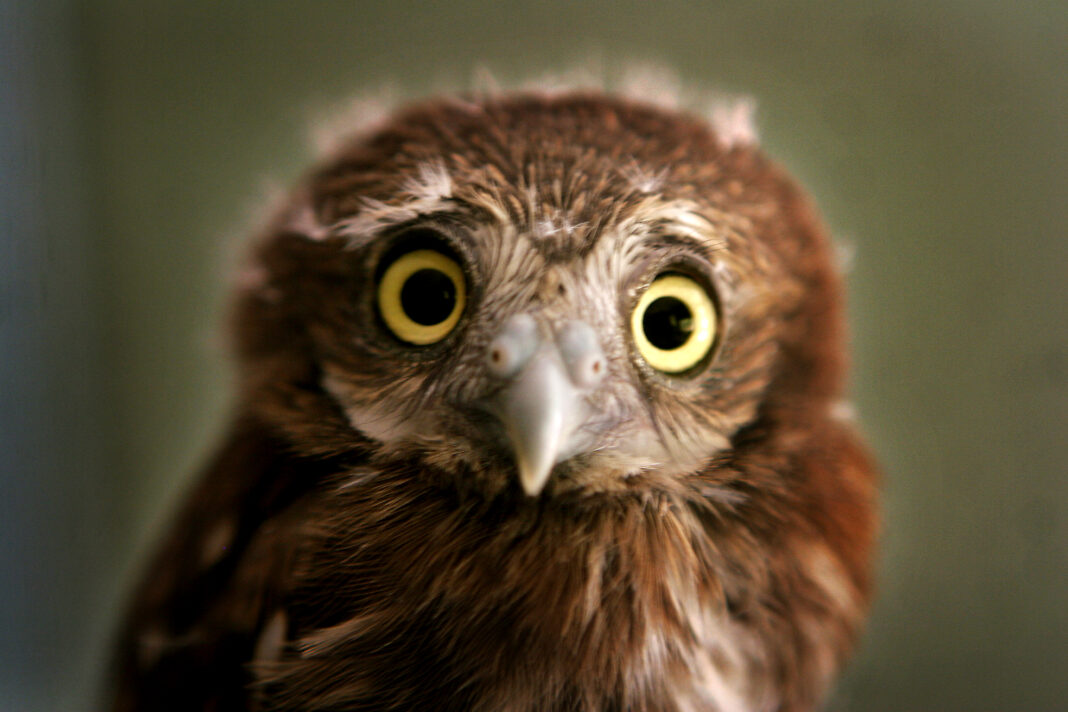The U.S. Fish and Wildlife Service is seeking the public’s input on whether it should once again list a small owl native to South Texas and Arizona as a threatened species.
Just six inches tall, federal wildlife officials call the cactus ferruginous pygmy owl a “ferocious” hunter that can take down prey twice its size.
The owl is present over two ranges that stretch across the U.S.-Mexico border — an eastern and a western range.
The western range stretches from the southwestern Mexican state of Michoacán north along the Baja coast and up into Arizona. The eastern range stretches from Tamaulipas and Nuevo Leon to the Rio Grande Valley north into the ranchland counties.
According to data from Texas A&M Agrilife Research, breeding populations of the pygmy owl have been confirmed in Starr, Kenedy and Brooks counties, while more are suspected to live in Hidalgo, Cameron and Willacy counties.
And though some research has taken place in Texas, it’s the bird’s Arizona populations that have been more heavily studied. And it was as a result of that research that, in 1997, the small raptor was listed as an endangered species.
At the time, USFWS officials determined that the owl’s American populations were distinct enough from their Mexican counterparts, and under significant enough population stress to put them at risk of becoming extinct.
But property developers in Arizona pushed back on the designation, and the subsequent legal protections the bird received — including limits on where new developments could occur lest they interfere with the tiny bird.
In 2001, the National Association of Home Builders, along with several other groups, sued to have the cactus ferruginous pygmy owl delisted, saying that American populations were not distinct enough to warrant protection.
In 2003, the land developers won their suit when an appellate court found that the USFWS “did not articulate a rational basis for finding that the discrete population was significant to the whole subspecies — including the population in Mexico,” according to a USFWS FAQ sheet of the bird’s history.
But now, the 2.6 ounce raptor is again being considered for federal wildlife protection — this time, as a threatened, versus an endangered species.
Federal officials, in partnership with university and private researchers, have spent the last 2.5 years analyzing the owl, its habitat and other variables in order to determine the current status of the species and how that status will change in the future.
It’s a rigorous study called a species status assessment, or SSA, that is meant to determine a species’ ability to remain self-sustaining over time.
It’s estimated that several hundred of the birds live in Arizona, while Texas populations may be as high as the “low thousands,” according to Scott Richardson, a USFWS biologist.
Richardson was speaking during a presentation and public hearing on the proposal to relist the pygmy owl as a threatened species. The hearing was held via Zoom on Jan. 25 as part of the process for relisting the bird.
And while the SSA determined that the majority of the bird’s population — which was divided into five distinct groups across Texas, Arizona and Mexico — are currently considered to be in “moderate” condition, their numbers are expected to decline in the future.
“That analysis into the future showed us that indeed, within that foreseeable future… that we felt that it was threatened with extinction throughout its range,” Richardson said, adding that “foreseeable future” meant about 30 years.
That’s due in large part to climate change and continued habitat loss.
“Changing climates affects changing prey availability — again, both the ecology of those prey species, but also the cover and habitat for those species,” Richardson explained.
One of the other major variables putting stress on the species’ sustainability is loss of habitat connectivity. Manmade activities, such as wood harvesting, agriculture, and the expansion of residential and commercial development are increasingly fragmenting the natural habitats the pygmy owl calls home.
In Arizona, the cactus ferruginous pygmy owl, as its name suggests, can often be found nesting in the tall saguaro cacti that are synonymous with the American Southwest.
But they also nest in tree cavities left behind by other birds, such as woodpeckers, or among the densely vegetated riparian bands than line riverbanks, and thorn scrub — habitats once common in Texas.
The plucky predators are fairly adaptable, too, changing their diets according to the season.
In warmer months, the pygmy owl eats lizards and insects, while in the winter, they prey on small mammals and other birds.
“They will eat pretty much anything that moves, including things that weigh twice as much as they do,” Richardson said.
But their small stature makes them prey, not just predator. Larger raptors, snakes and even raccoons have been known to feast on the pygmy.
But they’re not migratory birds, Richardson explained. Instead, birds occupy territories for their whole lives. The species spreads its range through its young, through a process called “dispersal.”
“After the young are born, they fledge, they hang around the nest site for about a month, and then they disperse,” Richardson said.
The bird has also shown a hesitancy to cross manmade barriers, such as wide highways and the border wall, further reducing habitat connectivity.
Taken together — continued climate change, habitat fragmentation, development expansion and other factors — federal wildlife officials have become certain the owl’s population will continue to decline and thus warrants being protected as a threatened species under the Endangered Species Act.
The public may make comments on the proposal at http://www.regulations.gov and searching for docket No. FWS-R2-ES-2021-0098. Comments will be accepted through Feb. 22.




